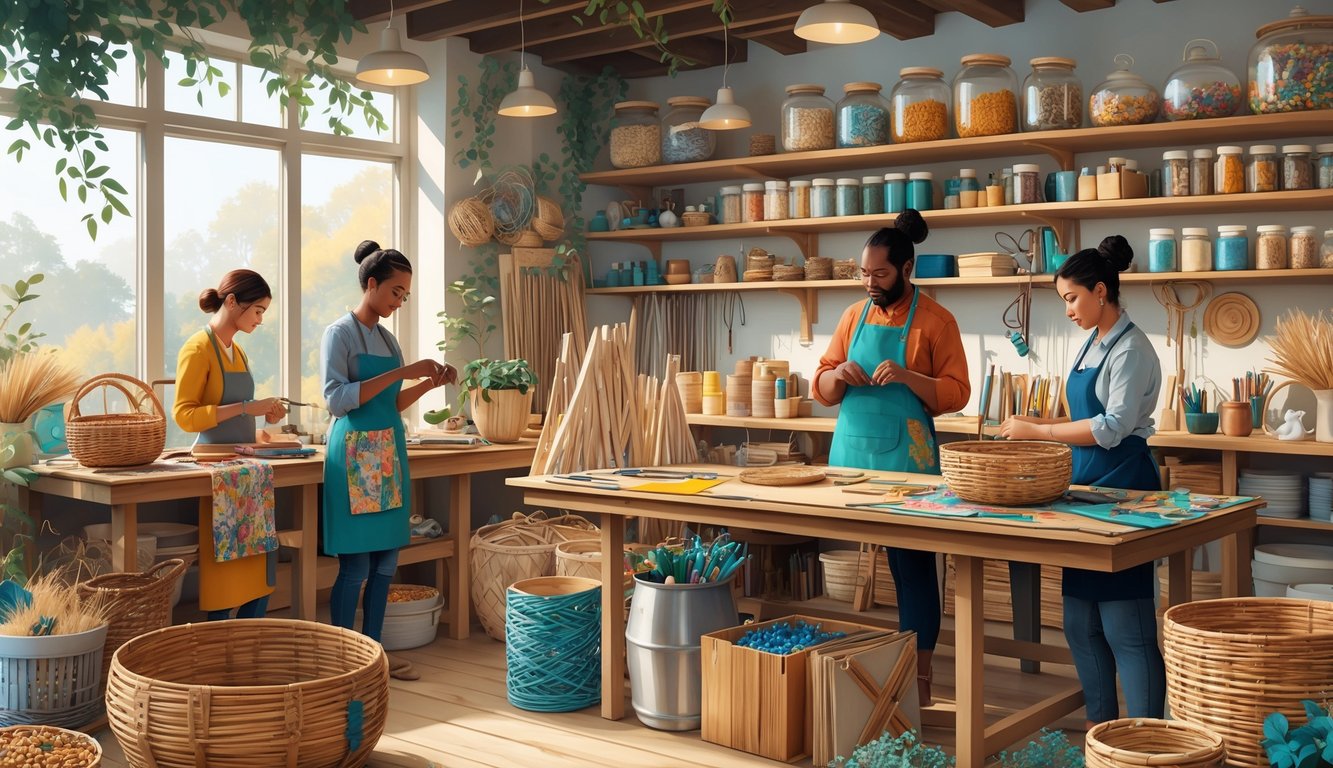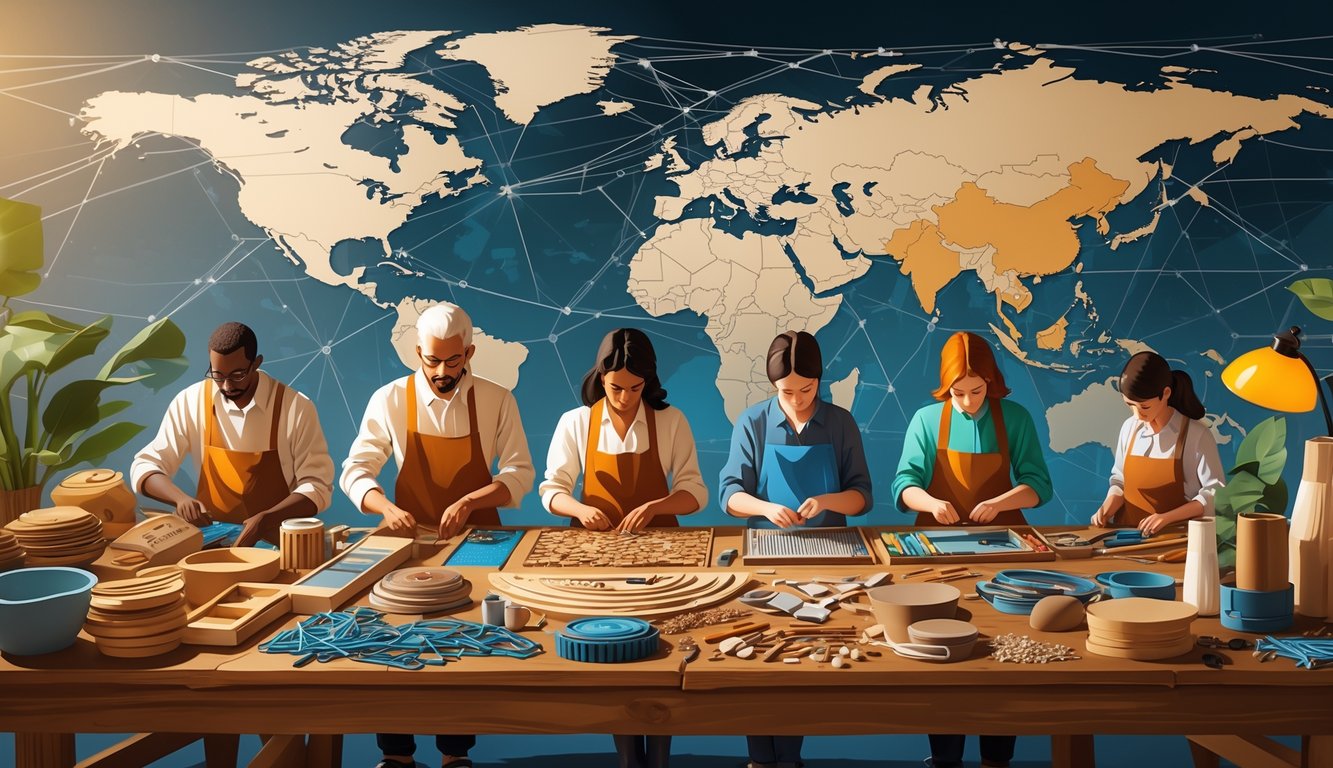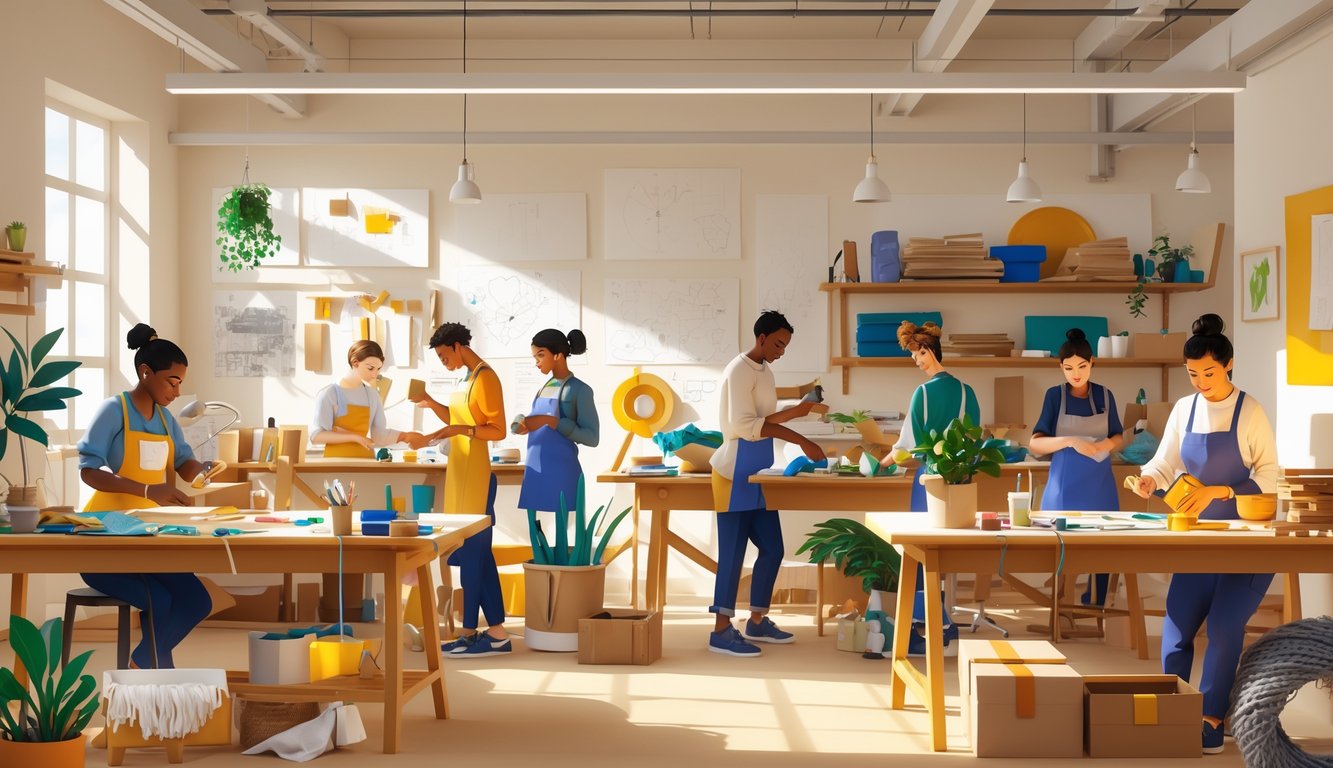
Glue sticks? Gone. Not that I’m hoarding them, but yeah, I just wanted one—suddenly I’m squeezing this plant-based stuff out of a bottle that smells like salad dressing. “Raw material shortage,” they say, but that’s just code for “good luck finding what you actually want.” Wool? Now it’s from the neighbor’s llama. Glass beads? Some guy’s garage. Paper feels like—banana peels? Or maybe it’s recycled blueprints, who can tell. Material shortages totally derailed my projects, but then weird supplies keep showing up, sometimes actually better, sometimes just… weirder.
Some days I just want plain old acrylic yarn, right? Nope, now the shop’s pushing recycled denim yarn. It’s like that time I made “brown sugar” by dumping molasses into white sugar because the real stuff was gone—crafters everywhere just kind of wing it, stacking random fixes on top of whatever’s backordered. Even the “experts” admit nobody knows if any of this will be around next week, so everyone’s grabbing whatever: pressed seaweed, bottlecaps, brushes meant for horses (seriously, that happened).
I read somewhere that containers are just stuck at ports, like, just sitting there. Fabric, glass, paper—doesn’t matter; if it’s stuck, you’re out of luck. So now crafters are just using whatever’s on the shelf (or not even a shelf—maybe it’s a neighbor’s garage sale, honestly). I’m knee-deep in hemp twine, unraveling old sweaters, grabbing up cardboard that used to hold shoes. Tissue paper from old boxes? Sure, why not.
The Global Materials Shortage: An Overview

Never thought I’d fight with my neighbor over felt, but that happened. Supplies just… vanish. Paint’s gone one week, embroidery hoops the next, and suddenly glue’s the hot commodity in a Facebook group. What even is this timeline?
Causes of Supply Disruptions
Cardboard boxes got expensive before thread did, which I guess makes sense if you’re a logistics nerd, but I’m not. Resin molds trended on TikTok, and that sure didn’t help. The pandemic? Yeah, everyone blames that, and sure, factories in East Asia shut down. Then Texas had a storm and the plastics dried up, and then—wait, was it the Suez Canal with that boat? I can’t keep track. And then someone brings up semiconductor chips, which… what? Are my buttons smart now? Whatever.
If you make candles and can’t find soy wax, it’s not about soy. Big shipping companies just lose stuff in random warehouses, or maybe they just give up. Here’s a list of stuff that’s been missing (2023–2024):
- Acrylic paints
- Natural fibers (cotton, wool)
- Metal charms
- Plastics (for resin)
Meanwhile, my dog keeps stealing googly eyes. That’s the only thing I have left, apparently.
Impact on Crafting Industries
It’s not just giant companies without paper towels—people like me are improvising every day. Looking for shrink plastic? Good luck. Someone told me to bake potato chip bags instead. It works, but the smell is… not good. Etsy sellers everywhere (Toronto, Chicago, wherever) just list “substituted materials” and nobody even blinks. Dollar-store beads instead of glass? Sure.
I bought waxed cord instead of embroidery floss by accident because the shelf was just empty. Macramé with that? I mean, I guess. Raw materials vanish, prices go wild, and people start trading patterns for actual thread—yes, that’s real. Even here, North America’s not immune. Shipping’s expensive, craft stores throw together “creative bundles” with whatever’s left, and everyone’s crocheting with t-shirt yarn now. My uncle said this is like the cabbage shortage in the ’70s. I don’t get it, but I just nodded.
How Crafters Are Adapting to Material Scarcity

Nobody pauses anymore—everyone just scrambles for the next option. Empty bins where felt or wire should be, and suddenly someone’s offering garden wire. Old shoelaces? Sure, use them for hangers. Why not.
Embracing Substitute Materials
It’s a vibe, honestly. “Use what you can get.” Yesterday I stood in the aisle, debating between floral pliers and ones from plumbing—neither felt right, but who cares? You’d be shocked what you can glue together with a little stubbornness and a pack of whatever glue is left.
Check this out:
| Traditional Material | Awkward Substitute | Does It Work? |
|---|---|---|
| Wool felt | Old sweater scraps | Sort of, if washed |
| Metal findings | Spare keyrings | Depends on project |
| Jewelry pliers | Mini vise grips | You get blisters |
Sourcing turns into a weird scavenger hunt. People are melting down candle stubs for molds. Soft plant wire as “yarn”? Tried it. Got tangled. Cat loved it, I didn’t.
Rethinking Traditional Crafting Methods
Letting go of “the right way” feels weird, but not as weird as the price tags on yarn lately. I’ve used a kitchen knife instead of a craft blade. Do I recommend it? Nope. But there’s this thrill, like, hey, maybe this is a terrible idea.
Friends are skipping stencils, just sketching outlines and erasing a million times. If a kit says “braided with wire” and there’s no wire, why not twine? Twist it, hope for the best. Shoelaces as necklace cords. Hardware pliers from the garage, squeaky and all. They leave marks, but I’ll sand them out, maybe.
It’s not pretty. Nobody said it had to be. I know a crafter who switched from screen printing to potato stamping. Potatoes don’t run out—unless you forget groceries, then it’s back to doodling beetles on cardboard.



